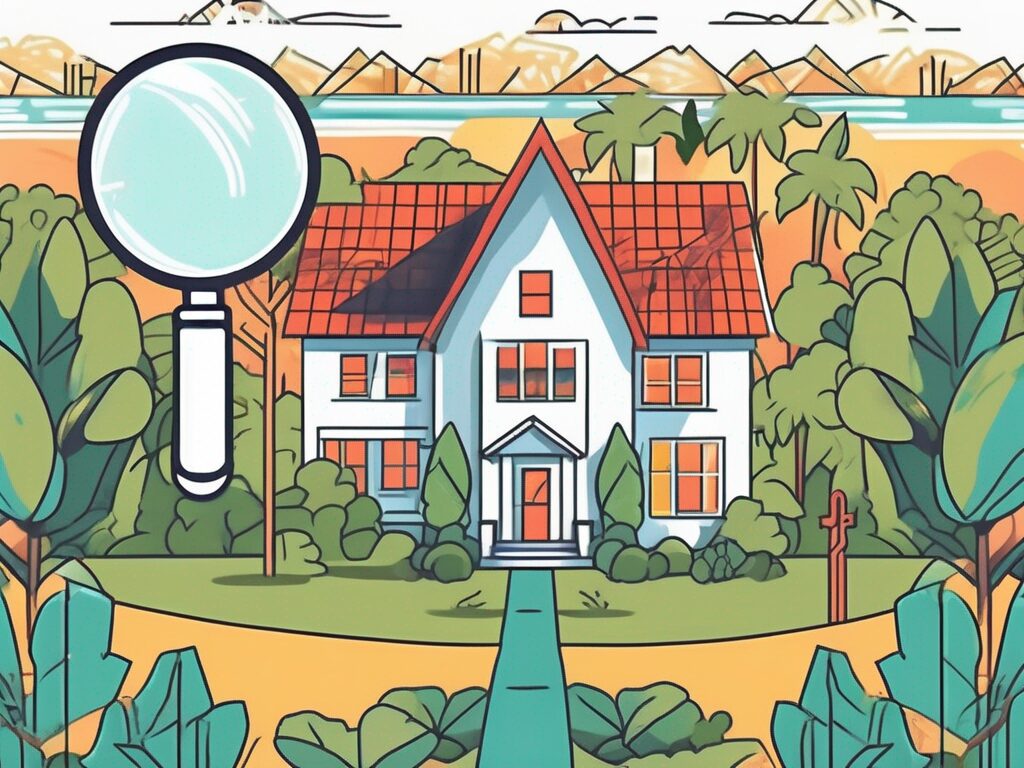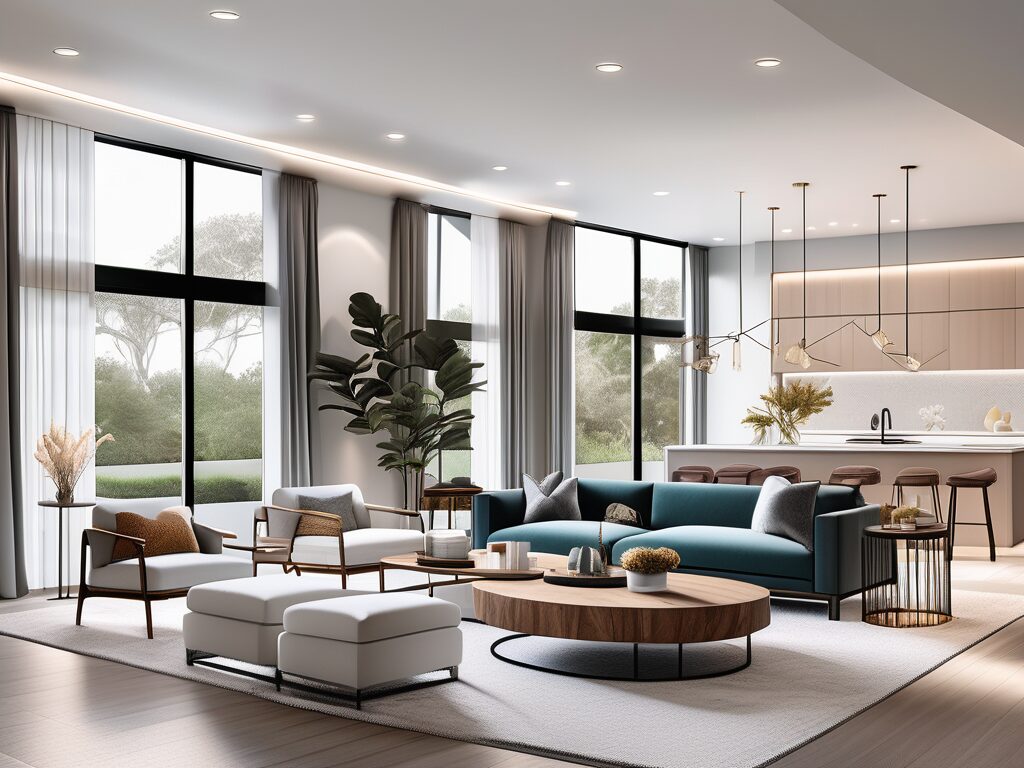
Agent A-Team or Solo Superhero? Finding the Right Real Estate Partner for Your Selling Journey in Wildwood Florida
When it comes to selling your home in Wildwood, Florida,…
January 29, 2024
Home staging is a crucial aspect of the real estate market, and its importance cannot be overstated. In today’s competitive market, where potential buyers have numerous options to choose from, it is essential for sellers to make their properties stand out. This is where home staging comes in.
Home staging refers to the process of preparing a property for sale by highlighting its best features and creating an appealing atmosphere that resonates with potential buyers. It involves decluttering, organizing, and decorating the space in a way that showcases its full potential. The ultimate goal is to create a lasting impression that will capture the hearts of potential buyers.
When it comes to selling a home, first impressions matter. Home staging is a powerful tool that can make a significant difference in how quickly a property sells and the price it commands. By strategically arranging furniture, adding tasteful decor, and enhancing the overall aesthetic appeal, home staging can transform a house into a buyer’s dream home.
One of the key aspects of home staging is decluttering. Removing personal items, excess furniture, and unnecessary clutter can make a space feel more spacious and inviting. Potential buyers want to envision themselves living in the home, and a clutter-free environment allows them to do just that.
Home staging plays a pivotal role in the real estate industry. Beyond simply making a property look attractive, it can significantly impact the selling process. Statistics have shown that staged homes sell faster and at higher prices compared to their non-staged counterparts. By presenting a property in its best light, home staging can tap into the emotions of buyers and help them envision themselves living in the space.
When potential buyers walk into a staged home, they are greeted with a sense of warmth and possibility. Every detail, from the carefully arranged furniture to the strategically placed artwork, is designed to create a welcoming and inviting atmosphere. This emotional connection can make all the difference in a buyer’s decision-making process.
Moreover, home staging can help highlight the unique features of a property. Whether it’s a stunning fireplace, a spacious backyard, or a beautifully renovated kitchen, staging can draw attention to these selling points and make them stand out. By showcasing the best aspects of a home, staging can increase its perceived value and generate more interest from potential buyers.
As the real estate market evolves, so do buyers’ preferences. To attract buyers in Niceville, it is essential to stay ahead of the curve and embrace innovative home staging techniques. By incorporating modern trends and utilizing cutting-edge technology, sellers can create an unforgettable experience for potential buyers.
Innovative home staging goes beyond the traditional methods of decluttering and decorating. It involves incorporating elements that resonate with the target demographic and creating a lifestyle that buyers aspire to have. This could mean incorporating smart home technology, creating a home office or gym space, or showcasing eco-friendly features.
By embracing innovative home staging, sellers can differentiate their property from the competition and make it more memorable. Buyers are constantly searching for unique and exciting homes, and by incorporating innovative staging techniques, sellers can capture their attention and leave a lasting impression.
In conclusion, home staging is a crucial aspect of the real estate industry. It has the power to transform a property, attract potential buyers, and ultimately increase its selling price. By understanding the importance of home staging and embracing innovative techniques, sellers can maximize their chances of a successful sale in the competitive real estate market.
Home staging is an art form that requires skill, creativity, and attention to detail. It is not just about making a property look presentable; it is about creating an atmosphere that appeals to potential buyers and helps them envision themselves living in the space. By understanding the basic principles of home staging, sellers can lay the foundation for a successful staging process.
One of the first principles of home staging is to declutter and depersonalize the space. Potential buyers want to walk into a property and imagine it as their own. This means removing personal items, family photos, and any clutter that may distract from the overall look and feel of the space. By creating a neutral canvas, sellers allow potential buyers to envision their own belongings in the space.
In addition to decluttering, strategic furniture arrangement is crucial in home staging. Furniture should be arranged in a way that maximizes the flow of the space and highlights its best features. This may involve rearranging existing furniture or bringing in rental pieces to create a cohesive and inviting atmosphere.
Another important aspect of home staging is to maximize natural light. Natural light can make a space feel bright, open, and welcoming. Sellers should ensure that curtains and blinds are open, allowing as much natural light as possible to flood the rooms. If a property lacks natural light, strategic lighting fixtures can be used to create a warm and inviting ambiance.
Tasteful decor can also work wonders in enhancing the appeal of a property. Sellers should aim for a cohesive and stylish look that appeals to a wide range of potential buyers. This may involve adding pops of color through accessories, incorporating trendy design elements, or creating inviting vignettes throughout the space.
While the basic principles of home staging are essential, advanced techniques can provide a competitive edge in the market. One such technique is virtual staging. With virtual staging, sellers can showcase the potential of an empty property by digitally adding furniture and decor. This not only saves costs associated with physically staging a property but also helps buyers visualize the space better. Virtual staging allows sellers to present a fully furnished and decorated property, giving potential buyers a clear idea of how the space can be utilized.
Another advanced technique is the use of technology to create immersive experiences. Virtual reality (VR) tours, for example, allow potential buyers to explore a property from the comfort of their own homes. This can be particularly beneficial for out-of-town buyers or those with limited time to physically visit properties. By offering VR tours, sellers can attract a wider audience and generate more interest in their listings.
Furthermore, incorporating smart home technology can also be a selling point for potential buyers. From automated lighting systems to smart thermostats, these features can enhance the convenience and energy efficiency of a property. By showcasing these technological advancements during the staging process, sellers can demonstrate the modernity and functionality of the property.
In conclusion, home staging is an art that goes beyond simply making a property look nice. It involves decluttering, strategic furniture arrangement, maximizing natural light, and incorporating tasteful decor. By understanding and implementing these basic principles, sellers can create an inviting and appealing atmosphere for potential buyers. Additionally, advanced techniques such as virtual staging, immersive experiences through VR tours, and the integration of smart home technology can give sellers a competitive edge in the market. With the right staging techniques, sellers can increase the chances of selling their property quickly and at a desirable price.
Innovation is the key to success in any industry, including home staging. By leveraging technology and adopting eco-friendly practices, sellers can attract buyers and make a positive impact on the environment.
When it comes to home staging, using technology has become a game-changer. One of the most exciting advancements is the use of virtual reality (VR) tours. With VR, potential buyers can now explore a property remotely and get a realistic sense of its layout. This technology allows them to virtually walk through each room, examine the details, and envision themselves living in the space. It eliminates the need for physical visits, saving time and effort for both buyers and sellers.
Another powerful tool in the home staging industry is professional photography and video tours. High-quality photos and videos can capture a property’s best features and create an emotional connection with potential buyers. These visual representations can be shared online, generating interest and attracting a wider audience. With the right angles, lighting, and attention to detail, a property can truly shine in the digital realm.
As sustainability becomes increasingly important, eco-friendly home staging techniques have gained popularity. Not only do these techniques appeal to environmentally conscious buyers, but they also showcase the seller’s commitment to a greener future.
One eco-friendly technique is the use of energy-efficient lighting. By replacing traditional light bulbs with LED lights, sellers can not only save on energy costs but also create a warm and inviting atmosphere. LED lights consume less energy and have a longer lifespan, making them an environmentally-friendly choice.
In addition to lighting, the choice of paint can also make a significant impact. Low VOC (volatile organic compounds) paint is a healthier and more eco-friendly alternative to conventional paint. It emits fewer harmful chemicals into the air, improving indoor air quality and reducing the carbon footprint of the property.
Furthermore, incorporating natural materials into the staging process can enhance the eco-friendly appeal of a property. From sustainable wood furniture to organic textiles, these elements not only add a touch of elegance but also demonstrate a commitment to preserving the environment. Buyers who prioritize sustainability will appreciate the effort put into creating a harmonious balance between style and eco-consciousness.
In conclusion, innovative home staging techniques go beyond the traditional methods. By embracing technology such as virtual reality tours and professional photography, sellers can showcase their properties in a captivating and immersive way. Additionally, incorporating eco-friendly practices like energy-efficient lighting, low VOC paint, and natural materials can attract environmentally conscious buyers and make a positive impact on the environment. With these innovative approaches, sellers can stand out in the competitive real estate market and increase their chances of a successful sale.
Every real estate market is unique, and Niceville is no exception. Understanding the local market trends and buyer preferences is crucial for tailoring home staging techniques to the specific needs of Niceville buyers.
When it comes to the Niceville real estate market, there is a wide range of properties available, catering to different lifestyles and preferences. From luxurious beachfront properties with breathtaking views to charming suburban homes nestled in peaceful neighborhoods, Niceville has something for everyone.
Researching local market statistics and trends can provide valuable insights for sellers looking to stage their homes effectively. By understanding what potential buyers in Niceville are looking for, sellers can align their staging efforts with the preferences of the local market. For example, emphasizing the proximity to the stunning beaches can be a major selling point for those who dream of living by the coast. Similarly, highlighting the family-friendly neighborhoods and nearby amenities can attract young families looking for a safe and convenient place to raise their children.
Niceville boasts a diverse real estate market, ranging from beautiful beachfront properties to cozy suburban homes. By researching local market statistics and trends, sellers can align their home staging efforts with the preferences of potential buyers. For instance, highlighting the proximity to the stunning beaches or emphasizing the family-friendly neighborhoods can be key selling points in Niceville.
Moreover, Niceville is known for its strong sense of community and friendly atmosphere. This aspect of the local culture can be incorporated into the home staging process to create a warm and inviting environment. By showcasing the community events, local parks, and recreational activities available in Niceville, sellers can appeal to buyers who value a close-knit community and an active lifestyle.
Knowing the target audience can greatly influence the success of home staging efforts. Niceville attracts a range of buyers, from retirees seeking a quiet coastal lifestyle to young families looking for a place to raise their children. By considering the demographics and lifestyle preferences of potential buyers, sellers can tailor their staging techniques accordingly, creating a space that resonates with the target market.
For retirees, creating a serene and tranquil atmosphere can be appealing. Incorporating elements such as comfortable seating areas with ocean views, soothing color palettes, and elegant decor can help potential buyers envision a peaceful retirement in Niceville.
On the other hand, for young families, focusing on practicality and functionality is essential. Highlighting features like spacious play areas, childproofed spaces, and nearby schools can attract buyers who prioritize a safe and nurturing environment for their children.
Additionally, Niceville is home to various outdoor recreational activities, such as boating, fishing, and hiking. Showcasing these activities through well-designed outdoor spaces or highlighting the proximity to parks and nature trails can appeal to buyers who enjoy an active lifestyle and appreciate the natural beauty that Niceville has to offer.
While home staging is essential, it is equally important to evaluate its effectiveness. Measuring the impact of home staging efforts can provide valuable insights and guide future decisions.
Home staging is not just about making a property look aesthetically pleasing; it is about creating an emotional connection with potential buyers. By strategically arranging furniture, adding decorative elements, and enhancing the overall ambiance, home staging aims to showcase the property’s full potential and help buyers envision themselves living there.
When measuring the impact of home staging, various metrics can be considered. Days on market, for instance, can give an indication of how quickly a staged property sells compared to non-staged ones. A shorter time on the market suggests that the staging efforts have successfully attracted potential buyers and created a sense of urgency.
Furthermore, tracking the final sale price in relation to the listing price can help assess whether home staging has contributed to a higher selling price. If the final sale price exceeds the listing price, it indicates that the staging has added value to the property and influenced buyers’ perception of its worth.
Once the metrics are gathered, it is crucial to interpret the results effectively. By analyzing the data and feedback, sellers can identify areas of improvement and adjust their home staging strategies accordingly. For example, if a property’s days on market are significantly longer than average, it may be necessary to reassess the staging techniques or make necessary updates to enhance its appeal.
Feedback from potential buyers and real estate agents can also provide valuable insights into the effectiveness of home staging efforts. Positive feedback about the property’s presentation and overall atmosphere indicates that the staging has successfully created a desirable environment. On the other hand, constructive criticism can help sellers identify any shortcomings and make necessary improvements.
It is important to remember that home staging is not a one-size-fits-all approach. Each property has its unique characteristics and target audience. Therefore, it is crucial to tailor the staging efforts to suit the specific property and potential buyers in order to maximize its impact.
In conclusion, measuring the impact of home staging efforts is essential for sellers looking to optimize their selling process. By tracking key metrics such as days on market and final sale price, sellers can gauge the effectiveness of their staging strategies and make informed decisions. Additionally, interpreting the results and gathering feedback can help identify areas of improvement and refine the staging techniques for future endeavors. With a strategic and well-executed home staging plan, sellers can create a captivating environment that resonates with potential buyers and ultimately leads to a successful real estate transaction.

If you want the Richr team to help you save thousands on your home just book a call.
 Book a call
Book a call